Canadian fir is a decorative Form of ate, which has a very attractive appearance. That is why it has become so popular among the gardeners. Today, this dwarf tree serves as an ornament in many corners of the Earth. In our middle lane, this plant is also pretty good. Next, we will tell you more about Canadian ate, landing and leaving for this culture.
Culture characteristics
The most common varieties of plants:
- Conic (Conica).
- Alberta Globe (Alberta Globe).
- Laurin (Laurin).
- Echiniformis.
The fir of the conic due to resistance to low temperatures can grow almost in any conditions that are familiar to ordinary firs. Since it has small dimensions, it can be planted even on a plot of a small area. In height, this decorative culture is most often growing not higher than 95 cm, but under some favorable conditions, it can "stretch up" and up to 2.5 m.
Crown of this dwarf ate dense, has the shape of a narrow cone. The color of the needles jeep green. As for the root system, it is usually a small low-raced rod root. At the same time, most of the roots are located quite close to the surface of the soil. Therefore, some earthworks when leaving the plant, in particular, loosening should be done very carefully.
The kink grows quite slowly. So, annually, she adds only 30-40 mm in growth in growth. Nevertheless, there are instances that per year can grow by 100 mm. Most often, five-year seedlings conic have a height of only 200 mm. But even at this age, they look much better than the tree ate ordinary of the same age. After another 5 years, the conic already reaches a height of up to 800 mm. Around the age of 11-13 years old, a good increase is preserved at the plant. In the future, the tree can add only 20-30 mm per year. Thus, spruce at the age of 20 has an average height of 1.5 meters. In this case, the diameter of the crown near the base reaches 1 m.
There is a kind of Size Christmas tree, which is characterized by yellow growths. This species is called Magold conic.
Canadian spruce: photo
Caring for Canadian fir
This culture requires a minimum of care. This variety does not need crown crown. Usually for normal growth enough precipitation and fertile soil. However, to enhance decorative properties, you still need to know how to properly care for Canadian fir.
Basic moments:
- If in the summer it will be too dry, then for ate it will be useful to carry irrigation through the crown. A couple of days after this, it is recommended to slightly braid under the soil tree. In addition, it will be useful to apply a spruce with a reworked organic to the soil.
- To prepare a fir to wintering, in the fall, it is recommended to climb the soil with a peat apart, a layer of 40-45 mm. In the spring, mulch should be covered directly under the base of the plant.
- So that the Christmas trees are not burned in the sun, they are recommended to wrap in some material that does not break the natural ventilation. For example, you can use burlap.
If in the spring some parts of the needle purchased a brown shade, then it does not mean that the tree is ill. The loss of color in needles ate is a reaction to the increased spring sunshine. When the soil started badly, the tree begins the so-called seasonal vegetation, and because of the stunned soil, it can not yet get enough nutrients. That is why the needle acquires a brown shade. Normal color is usually restored when the full nutrition of the soil will restore and the juice movement will begin.
Landing Canadian ace
Canadian spruce can be transplanted over the entire growth period. At the same time, some important requirements must be observed:
- Testing the treeper is best at younger. In the spring and autumn period, it is best to carry out a transplant with an open root system, and in the summer it is recommended to transplant spruce along with soil com. And do it best when cloudy.
- After landing, for about the first pairs of weeks, it is necessary to maintain the optimal level of soil moisture. In addition, the trees need protection against direct sunlight.
- In addition, it must be remembered that all coniferous trees, including decorative, will not be able to endure excessive and long stay in too damp. The same applies to a long drought. If the soil is too wet, then the roots will gradually become soft, and then start damp. Therefore, any coniferous breeds feel well on earth with low groundwater location.
- If it is impossible, then for decorative ate you need to provide sufficient drainage. The best conic feels at high humidity and rare precipitation. Nevertheless, the proximity of coniferous rocks to the garden will only benefit. This will have a positive effect on the shade of the needles. In addition, it will reduce the likelihood of burning in the sun.
- As for the composition of the soil, the majority of coniferous trees prefer the weakness, moisture and sufficiently loose land. But excessive fertility can not be called dignity. This is most likely a disadvantage, because of which the seedlings are stronger and worse and worse.
Plant reproduction
Canadian spruce can be multiplied by various ways. Including this use:
- seeds
- saplings,
- cuttings.
Obviously, from seeds the village will grow longer. And the most difficult way, perhaps, is the use of cuttings. As a seedling, you need to pick up the lower rusty branch, the length of which should be 100-110 mm. The lower part of the cutting should be treated with a growth stimulant and put in the soil to a depth of about 20-30 mm. When growing seedlings of the dwarf Canadian Christmas tree of cuttings, it is best to use a normal soil mixture. After landing, you must not forget to provide a plant with sufficient irrigation.
To date, growing plants for sale, including decorative firings, is a good business option for gardeners. Nevertheless, this cannot be said about the dwarf Canadian Christmas tree. Breeding such plants for sale is considered, on the contrary, a disadvantageous case, if only because they require a lot of time to grow. In addition, it is impossible to forget that young seedlings require constant care, namely, watering, making fertilizers and soil loosenings. For sale, the Canadian Christmas tree will be suitable only in 3-5 years, when it reaches a height of 200 mm.
When buying a cutlery (seedling) of the Canadian ate, first of all, to pay attention to its form. It is important that it corresponds to the selected variety. In addition, pay attention to the painting of the needles - it must be intense. Often, Canadian ate is already sold in the tank with the soil. Such seedlings usually have a lot of sprouted roots. But at the same time, they should not form a dense dumping mass. It is even important that the land in the tank is not dry.
Typically, the root system of cultures that are sold for landing, wrap in wet matter or a grid. The transplant process should be approached very carefully, because This directly affects how the tree will grow and develop.
If you succeed in getting at the beginning of the summer, the cuttings of a dwarf Canadian Christmas tree, then it is best to try to root them to grow a strong and strong plant. This will definitely leave quite a lot of time during which they will require constant care. Award for your patience will be a wonderful kind of a dwarf plant that will definitely decorate your personal garden.
Diseases and pests
Coniferous species of trees, like many other plants, are subject to various diseases and pests. One of them is tracheomecosis. This is a very dangerous fungal disease, affecting the root system of ate. Due to the tracheenecosis, the roots lose the ability to deliver nutrients to the plant itself.
Most often, the disease amazes young trees. The signs of this disease are, above all, redness and peak of needles. Unfortunately, affected by this diseases of the village cannot be cured. In order for the disease does not apply, sore trees are digging with a large land and burn. After that, the place where they grow, it is necessary to be treated with a solution of copper sulphate.
Another essential disease of coniferous plants is rust. It is characterized by an education on the branches of yellow or orange outlook. At the same time, the needles usually fall.
Among the pests of coniferous rocks most often, a coroede is found. These little beetles are frozen under the crust of the tree many moves. In addition, they lay eggs there, of which larvae appear, also feed on wood. If the village is struck by this pest, it is almost impossible to save it. Sometimes in this case the seedlock is treated with a weak solution "Bi-58".

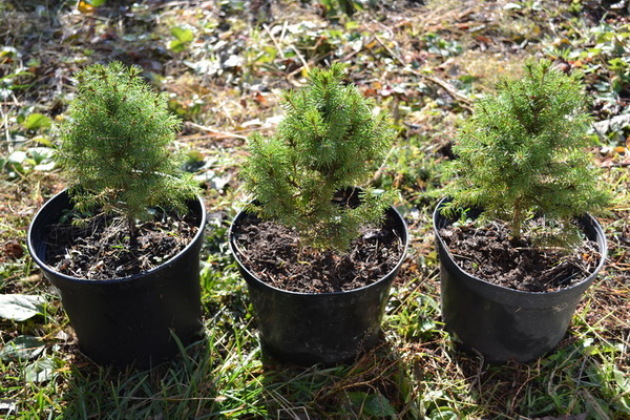
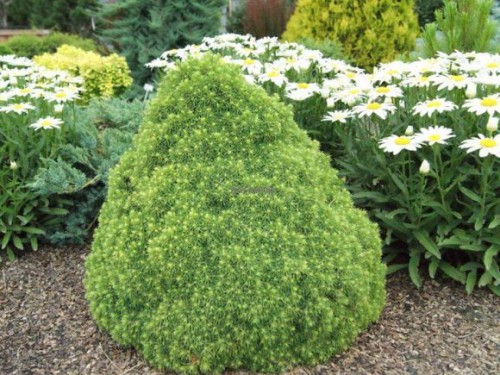
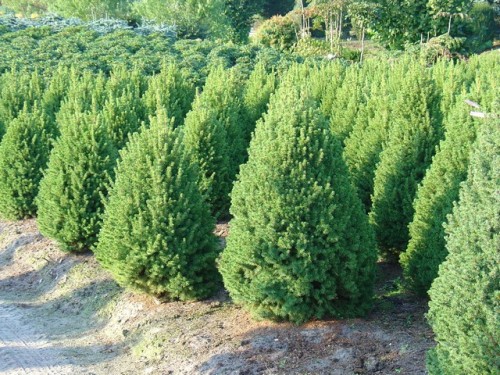
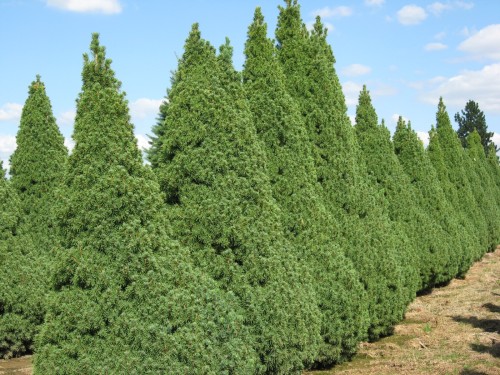
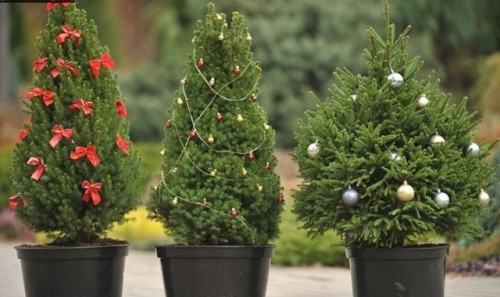
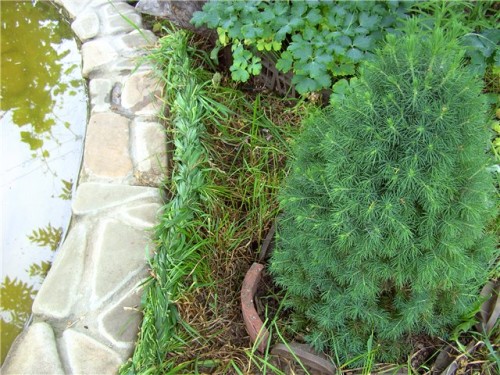
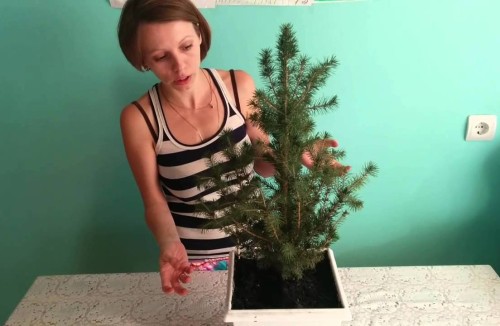
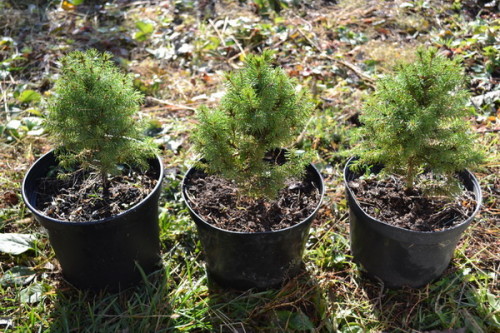
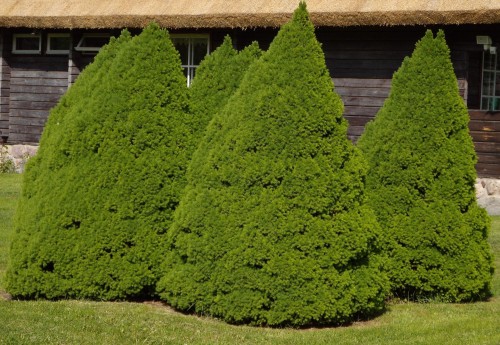












 Start a discussion ...
Start a discussion ...